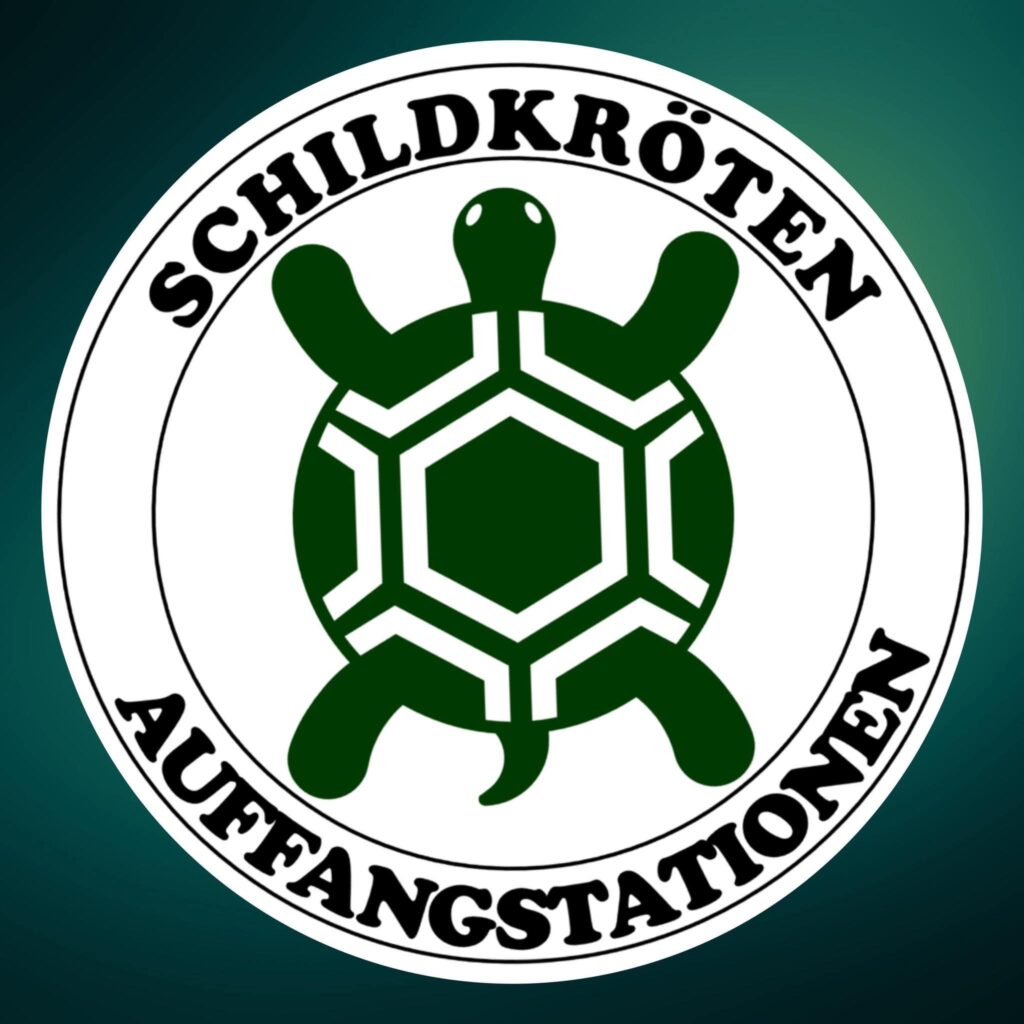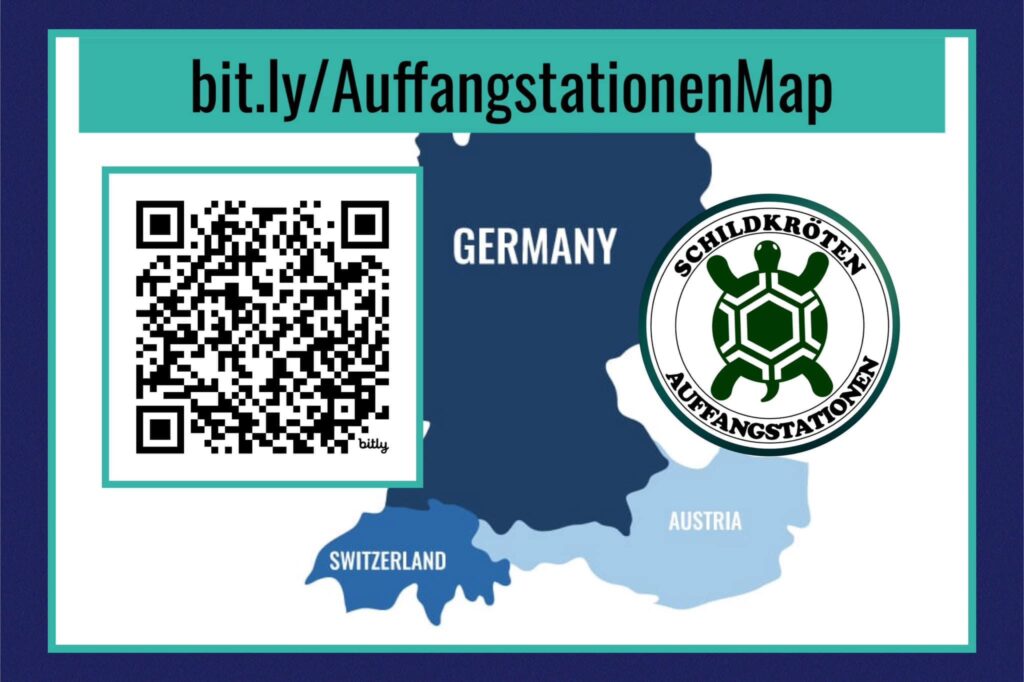What to Do with Unwanted Tortoises?
Tortoise rescue centres and animal shelters with reptile departments across Europe diligently care for unwanted aquatic and terrestrial turtles (referred to as surrender animals, abandoned animals), animals seized by the veterinary authorities, and found animals. Occasionally, they also offer holiday care. During information days and events, these centres provide invaluable education about the proper care of turtles and tortoises.
If legally possible, efforts are made in close cooperation with the relevant wildlife protection authority to place tortoises in appropriate care. No placement can occur without the approval of the wildlife protection authority. For particularly protected species, in Germany regular photographic documentation is required. In other European countries, the placement of a micro transponder will be necessary. These steps are necessary to confirm the legal origin of protected species.
While many found animals can often be traced back to their owners, for example, through the Schildkrötensuche Facebook group, other tortoises often remain in the care of rescue centres for extended periods until rehomed. Contrary to popular belief, tortoises require a high level of care and can suffer from serious illnesses due to incorrect care, including inadequate warmth, lack of UV light, and improper diet.
Many tortoises arriving at rescue centres are ill due to improper care. Nursing them back to health is costly as it requires intensive veterinary and care support. Some tortoises remain permanent residents.
Most rescue centres operate with volunteers and receive minimal state support, if any. Even recognition as an animal shelter and the associated subsidies rarely cover veterinary costs. Therefore, rescue centres rely on donations to cover their expenses. Many establish support associations to issue tax-deductible donation receipts.
Ongoing education through seminars and conferences is essential for rescue centres to stay up-to-date. A crucial part of their work involves advising on the proper care of turtles. Official rescue centres in Germany have expertise according to Section 11 of the Animal Welfare Act and are recognised by the veterinary authorities.
Before rehoming, the care setup is reviewed and may need to be improved for the animals being rehomed. Rehoming occurs exclusively into appropriate care. As most tortoises are protected species and are also notorious escape artists, enclosures or ponds must be escape-proof and secure against predators. Before integrating with existing animals, a strict quarantine must be observed, and all animals must be tested for infectious diseases such as mycoplasmosis, herpes, Rana virus, and virus X.
Turtles can live up to 100 years, so it’s wise to plan for the possibility of not being able to keep them in the future. One should inform themselves about potential places to rehome the tortoises in case of emergency and consider making provisions for their care. Some rescue centres act as sanctuaries, accepting animals permanently against a reasonable donation.
Visitors to rescue centres may be surprised by the number of male tortoises. Unfortunately, many males are surrendered or abandoned because they generally do not tolerate other males. Integration, if possible, can only be attempted with multiple females, and even then, permanent separation of the male should be possible. Single housing is acceptable for tortoises, as they are naturally solitary animals.
Often, owners inquire at rescue centres about rehoming their tortoises. Surrendered tortoises should ideally be tested twice for herpes and mycoplasmosis to speed up the rehoming process and minimise the extensive quarantine. Herpes and mycoplasmosis are unfortunately widespread. Necessary deworming should also be completed. The intake often fails due to full quarantine enclosures. Once the animals are tested, rehoming to a new home becomes easier.
A growing issue is the increasing number of exotic giant tortoises, such as African spurred tortoises, ending up in rescue centres. Purchased as tiny juveniles, they quickly outgrow terrariums. An adult spurred tortoise can weigh up to 100 kg after 20 years. Anyone acquiring such a species should be aware that it requires an outdoor enclosure with a heated greenhouse in summer and a full-room terrarium in winter to meet its needs.
Before acquiring a tortoise, it is advisable to seek thorough advice from a rescue centre to ensure correct care from the start and to meet the animals‘ needs. Prospective owners are encouraged to visit rescue centres, where they might find their ideal companion.


Surrendering a Tortoise
There may be situations where, unexpectedly, you can no longer keep your tortoise and need to surrender it. In such cases, it is advisable to first inquire among friends, family, and other tortoise keepers to see if anyone is interested in expanding their collection or considering taking over the animal.
It is helpful to consult local tortoise and reptile clubs, as well as animal welfare organisations. Contacting the original breeder is also wise, as breeders sometimes take back their offspring. Alternatively, specialised organisations or fee-based surrender points, such as tortoise rescue centres and animal shelters, can assist with rehoming.
Before rehoming, all relevant documents should be reviewed and, if necessary, updated in consultation with the relevant wildlife protection authority. For animals with CITES Appendix A, a complete photographic documentation is essential. Testing for herpes and mycoplasmosis can expedite the rehoming process. Once a new home is found, all papers, veterinary invoices, and purchase receipts should be handed over to the new owner.
To ensure all information is retained, it is advisable to keep copies of all documents. As the owner, you are responsible for proving the transfer to the authorities. The animal must be deregistered with the relevant authority, and a confirmation from the new owner should be obtained and kept safely. The new owner must also register the animal with their local authority. Optionally, a private protection contract can be made to ensure the animal’s welfare.
Sample Protection Contract
Protection Contract for a ___________ (Species)
I hereby confirm by my signature that I have received the tortoise with number NZ_____ from ………………………………………. (Seller). The CITES/EC certification number is DE-__________.
I commit to promptly report the change of ownership of the tortoise(s) to the relevant wildlife protection authority or government office.
Furthermore, I assure that the tortoise(s) will be kept in accordance with their species requirements. This includes outdoor housing with a heated greenhouse or cold frame and a basking area. In case of illness, I will have the tortoise(s) treated by a veterinarian. In autumn, they will be sent into hibernation.
If I am no longer able to keep or do not wish to keep the tortoise(s), I commit to promptly inform the previous owner. This allows them to potentially rehome the tortoise(s) elsewhere. I assure that the received tortoise(s) will not be sold but will be returned free of charge.
__________, on _______________ Name: ________________________________________________________ Address: _____________________________________________________ Phone, Email: _______________________________________________
Signature
A constantly updated map of tortoise rescue centres, foster homes, and animal shelters with reptile departments in the German speking European countries can be found in the Facebook group related to our tortoise rescue centres and our Facebook Group.